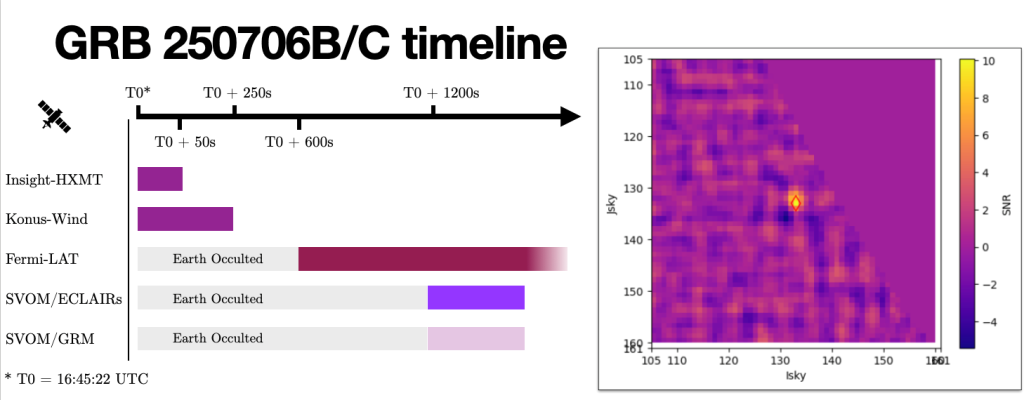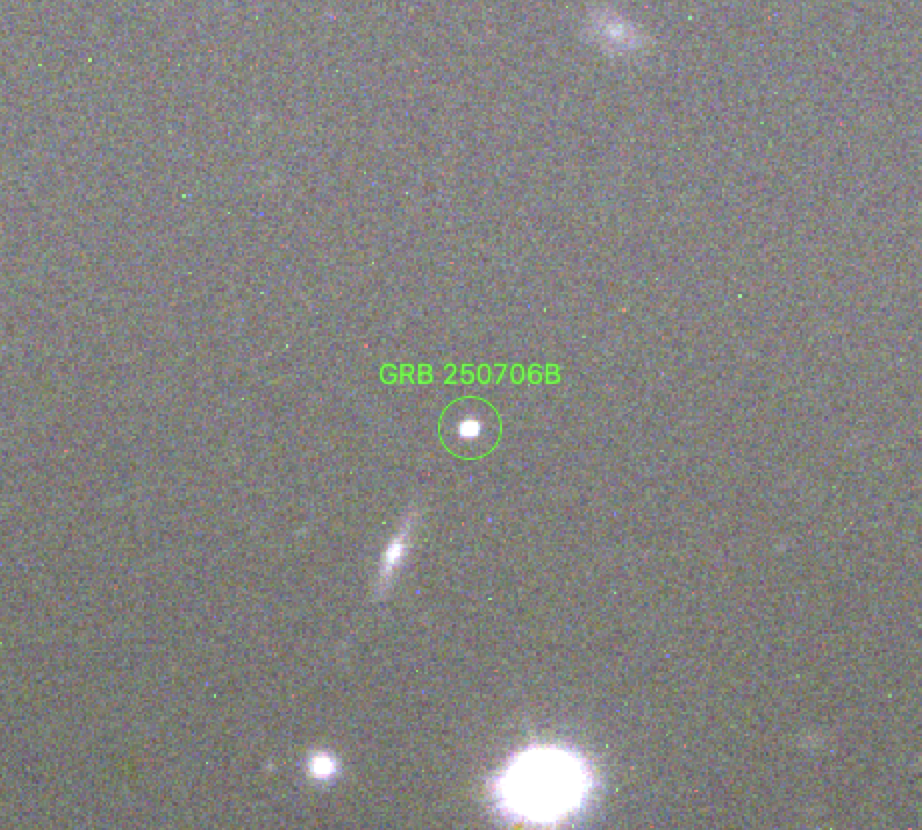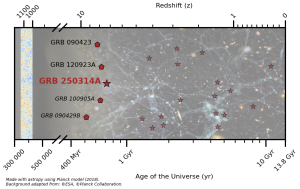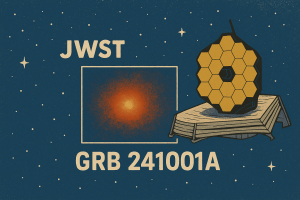GRB 250706B: an “afterglow”-rise caught from space
On July 6, 2025, the Universe staged an impressive display. At 16:45:22 UTC, the Konus-WIND spacecraft was startled by a powerful 40-second flash of gamma rays, later catalogued as GRB 250706B. While this Gamma-Ray Burst (GRB) was impressive by its initial prompt brightness, it would be its afterglow that would steal the show.
Ten minutes after the initial blast, the fading light of the burst’s afterglow appeared above the Earth’s horizon and into the field of view of the LAT instrument onboard the Fermi satellite, which recorded photons carrying energies as high as 21 billion electronvolts. Then, another 10 minutes later at 17:06:04 UTC, as the burst emerged from behind the Earth for SVOM, its ECLAIRs instrument was triggered — not by the initial flash of prompt emission photons as is usually the case, but by the bright X-ray afterglow itself. This was the first time ECLAIRs had triggered on a GRB afterglow which was made possible thanks to its special image trigger mode and its lower energy threshold of 4 keV.

SVOM swiftly reacted, slewing toward the source in less than three minutes. Its onboard telescopes, MXT and VT, captured the afterglow pinning down the position of the burst to within a fraction of an arcsecond, enabling the X-shooter instrument installed at the Very Large Telescope in Chile to measure its redshift at z = 0.942, equivalent to a distance of 6.3 billion parsecs away, from a time when the universe was barely half its current age.

Finally, one month later on August 5th, after the afterglow finally faded, the NIRSpec instrument of the James Webb Space Telescope revealed the unmistakable signature of a broad-lined Type Ic supernova at the same location — the telltale mark of a massive star’s core collapse, confirming the collapsar origin of GRB 250706B. The wealth and quality of data collected on this event should allow scientists to get a detailed understanding of the physics at play and attempt to provide answers as to why it was so bright.
GRB 250706B was more than just another detection. It was a rare “afterglow”-rise: a cosmic sunrise, as the light of a cataclysm long past crested the Earth’s edge into our instruments’ view. If a human with X-ray vision had been onboard the SVOM satellite, they too would have witnessed an extraordinary sight — not the familiar golden glow of dawn, but the sudden rising of a distant afterglow, born in the violent death of a star billions of years ago.
Contact: Jesse Palmerio



